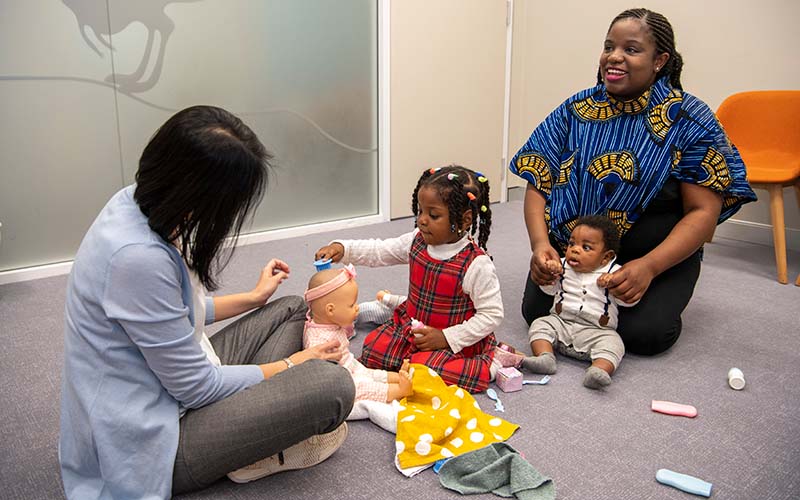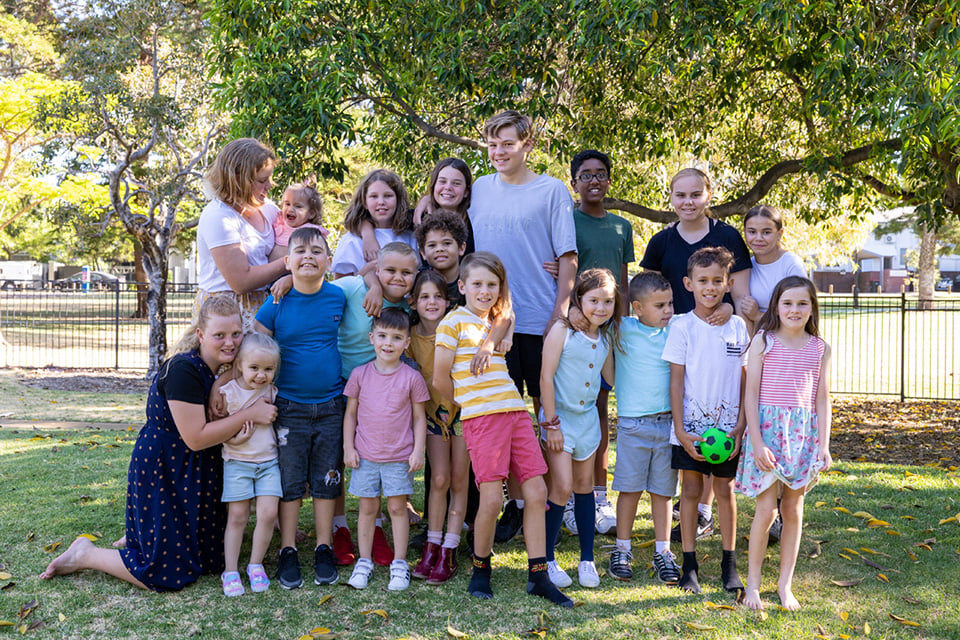Language development in early life
Typically, children achieve three important language milestones in the first two years of life:
- Understanding words spoken by their parents at around 8 months
- Saying their first words around 12 months
- Combining 2-3 words in simple sentences at 24 months
Around the age of 5, when Australian children start full-time school, most children can communicate easily with children and adults, are easy to understand and understand others. Young children learn the languages(s) spoken to them at home through every day interactions and experiences with their parents, family and friends.
Language delay
While most children learn language with remarkable ease, this is not the case for all children.
13% of Australian two-year-olds are late to start to talk. Language delay, late talking or late language emergence are terms used to describe otherwise healthy toddlers who do not meet age expectations for expressive and/or receptive language development.
Expressive and receptive language
Expressive language refers to the production of speech sounds, words and sentences to express meaning while receptive language refers to our understanding of language. These terms apply to children with otherwise typical development whose individual differences are primarily confined to language.
Typically, late talkers are identified on the basis of expressive language delay. However, they can also have mixed expressive/receptive vocabulary delays (e.g., not following simple instructions such as "Put teddy to bed" or "Show me your nose").
How common is language delay?
The prevalence of receptive vocabulary delay at two years of age in the general population is unknown. Usually, the term late talker is used to describe children learning one main language: criteria for identifying language delay in bilingual children are yet to be established.
What are the outcomes for late talkers?
80% of late talkers catch-up by age 7, however, 20% of late talkers have persistent language impairment. Language impairment is defined as delayed language development relative to other children of the same age. Boys are more likely to be late talkers than girls at age 2. However, at age 7, similar proportions of boys and girls have language impairment.
11% of children with language impairment at age 7, were not late talkers at age 2. This means that children can start on track in their language development and fall behind later on. Most late talkers do not have persistent language impairment and not all children with language impairment were late talkers.
Our research impact
The challenge remains to identify which children won't catch up, or might suddenly fall behind, so that they can get early intervention.
To answer this, our researchers continue to look at genetic, neurobiological and environmental factors affecting language. For the past 15 years, they have been collecting and analysing data from more than 5000 West Australian children aged 2 - 14 years, including 700 sets of twins. This ‘Looking at Language’ study is the largest, longest and most comprehensive study of language and literacy development in the world.
Our researchers are also looking at:
- Exactly how language development impacts on a child's success at school
- Ways to develop a universal system for monitoring children’s language development in childhood and adolescence.


